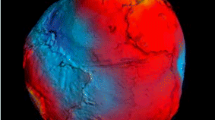
Overview
- Key question addressed by author is: “What’s special about spatial?”
- Book is written for students and researchers of computer science and geographic information science
- Author's accompanying website contains simulation models and associated source code
- Includes supplementary material: sn.pub/extras
Access this book
Tax calculation will be finalised at checkout
Other ways to access
About this book
In Part I of the book the author covers the foundational concepts, structures, and design techniques for decentralized computing with spatial and spatiotemporal information. In Part II he applies those concepts and techniques to the development of algorithms for decentralized spatial computing, stepping through a suite of increasingly sophisticated algorithms: from algorithms with minimal spatial information about their neighborhoods; to algorithms with access to more detailed spatial information, such as direction, distance, or coordinate location; to truly spatiotemporal algorithms that monitor environments that are dynamic, even using networks that are mobile or volatile. Finally, in Part III the author shows how decentralized spatial and spatiotemporal algorithms designed using the techniques explored in Part II can be simulated and tested. In particular, he investigates empirically the important properties of a decentralized spatial algorithm: its computational efficiency and its robustness to unavoidable uncertainty. Part III concludes with a survey of the opportunities for connecting decentralized spatial computing to ongoing research and emerging hot topics in related fields, such as biologically inspired computing, geovisualization, and stream computing.
The book is written for students and researchers of computer science and geographic information science. Throughout the book the author's style is characterized by a focus on the broader message, explaining the process of decentralized spatial algorithm design rather than the technical details. Each chapter ends with review questions designed to test the reader's understanding of the material and to point to further work or research. The book includes short appendices on discrete mathematics and SQL. Simulation models written in NetLogo and associated source code for all the algorithms presented in the book can be found on the author's accompanying website.
Similar content being viewed by others
Keywords
- GIS
- SQL
- algorithmic foundations
- ambient spatial intelligence
- artificial intelligence
- decentralized spatial computing
- distributed computing
- ecology
- emergency management
- environmental monitoring
- geographic information science
- geographic information systems
- geosensor networks
- location-based algorithms
- neighborhood-based algorithms
- relational databases
- simulation
- spatial computing
- traffic modelling
- urban planning
Table of contents (9 chapters)
-
Front Matter
-
Foundations of Decentralized Spatial Computing
-
Front Matter
-
-
Algorithms for Decentralized Spatial Computing
-
Front Matter
-
-
Simulating Decentralized Spatial Algorithms
-
Front Matter
-
-
Back Matter
Reviews
“This book is an excellent summary on the topic of distributed spatial planning. … This book provides valuable insight in terms of working with sensor networks which are now arising around the world. … the concepts and discussions are useful and valuable to a wide ranging auidence. For this reason, anyone working with geosensors today will find this book well worth the read.” (Jeff Thurston, 3dvisworld.com, December, 2014)
Authors and Affiliations
About the author
Bibliographic Information
Book Title: Decentralized Spatial Computing
Book Subtitle: Foundations of Geosensor Networks
Authors: Matt Duckham
DOI: https://doi.org/10.1007/978-3-642-30853-6
Publisher: Springer Berlin, Heidelberg
eBook Packages: Earth and Environmental Science, Earth and Environmental Science (R0)
Copyright Information: Springer-Verlag Berlin Heidelberg 2013
Hardcover ISBN: 978-3-642-30852-9Published: 27 July 2012
Softcover ISBN: 978-3-642-44130-1Published: 09 August 2014
eBook ISBN: 978-3-642-30853-6Published: 27 July 2012
Edition Number: 1
Number of Pages: XXII, 322
Topics: Geographical Information Systems/Cartography, Information Systems and Communication Service, Theory of Computation, Computer-Aided Engineering (CAD, CAE) and Design, Artificial Intelligence



